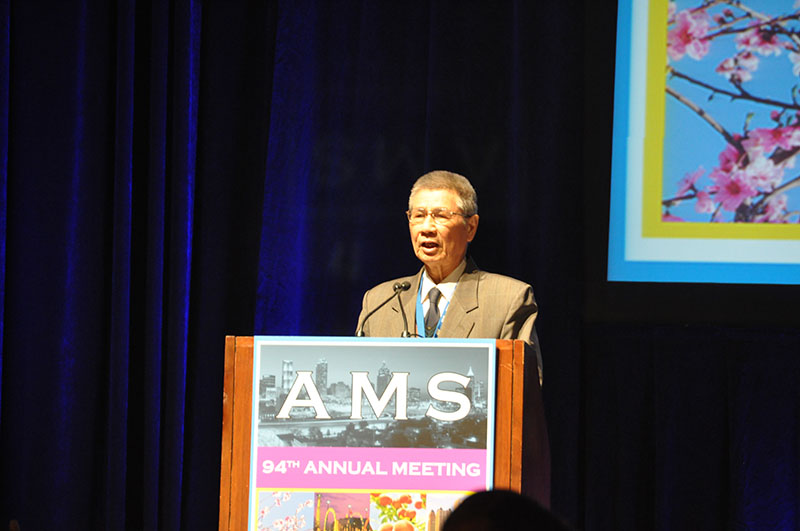Nation saw great steps in weather prediction


The equations used — known as primitive equations — are now the core of every general circulation model for atmospheric research, taking into account the fundamentals of atmospheric dynamics, including the Earth's rotation, fluid dynamics and thermodynamics. The models can simulate real-world atmospheric activities such as the formation and evolution of tropical cyclones.
They are so complicated that the ability to solve them is one of the indicators used to determine the power of today's supercomputers. Due to their complexity, scientists in the 1950s focused on simpler models that left the indicators out, but that limited the accuracy and timeliness of their forecasts.
In 1957, Zeng was sent to the Soviet Union to pursue his studies in numerical weather prediction. His tutor assigned him a dissertation topic that had puzzled the world: how to use primitive equations to approximate atmospheric flows and predict short-range weather.
Zeng said many of his teachers and classmates urged the tutor not to give such a difficult project to a young man, saying it could affect his graduation prospects. But Zeng's tutor trusted his mathematical capabilities and Zeng did not fail the tutor's expectations.
In 1961, Zeng's dissertation was published in Russian. In it, he described a mathematical integration method called "semi-implicit scheme" he designed to separately solve the primitive equations for atmospheric motions on different time scales.
The Moscow World Meteorological Center has applied the scheme in operational predictions since 1963, raising forecast accuracy by 61 percent.
"Zeng is the first in the world to solve the most complicated equations using a semi-implicit scheme, which opened a new chapter in the world's numerical weather predictions. It is a milestone contribution," said Wang Huijun, a CAS academician who works at Nanjing University of Information Science and Technology.
Zeng returned to China in 1961 and worked at the Institute of Atmospheric Physics, a subsidiary of the Chinese Academy of Sciences from 1966. Due to the lack of powerful computers at the time, Zeng went back to basic theoretical research in atmospheric and fluid dynamics.
In 1970, as China began to develop its satellite meteorology, Zeng was selected to join a program investigating some of the fundamental problems of remote sensing. His book on the principles of atmospheric infrared remote sensing, published in 1974, provided the first systematic quantitative theory in that field.
The concepts proposed in the book are still widely used in monitoring heavy rains, typhoons and related disasters. For example, in September 2018, they helped predict the path of Typhoon Mangkhut, an extremely powerful tropical cyclone, and prevented great losses.
His work is also used in monitoring dust storms in East Asia and predicting monsoon variability and related weather and climate hazards in China.
Zeng has earned many honors and awards. He became an academician of the Chinese Academy of Sciences in 1980, a foreign member of the Russian Academy of Sciences in 1994, a fellow of the Academy of Developing Countries in 1995, a member of the International Euro-Asian Academy of Sciences in 1996, and an honorary member of the American Meteorological Society in 2014.
In 2016, the World Meteorological Organization awarded Zeng the IMO Prize, the most important award in meteorology.
"It's impossible to do basic research without full concentration," he said. "You must firmly believe that the research you are working on is needed for scientific development and is needed by the people."
- Breakthrough in BMI tech aids patients
- Chinese technique for making ultrathin metal films named top 10 scientific breakthroughs
- Former senior political advisor of Sichuan sentenced to 14 years
- Beijing has undergone dramatic improvements since 2017's revamped development plans
- AI open alliance launched to pool resources for innovation and application
- China's ability to forecast floods boosted by holistic monitoring network





































